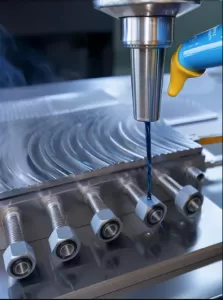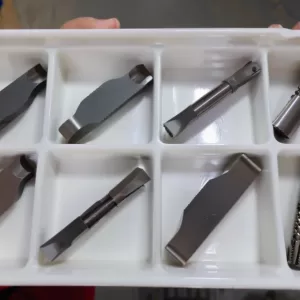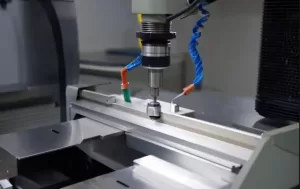May 24, 2025
Understanding and Mitigating Vibration in CNC Milling
Vibration is a common challenge in mechanical cutting. It impacts product quality, tool life, and noise levels. We categorize this phenomenon into two main types: forced vibration and self-excited vibration (chatter). Internal machine interferences cause forced vibration. Self-excited vibration, especially regenerative chatter, results from uneven textures on the machined surface. This unevenness leads to inconsistent cutting thickness and fluctuating cutting forces, ultimately exacerbating vibration.

Analyzing Cutting Stability
Cutting processes are fundamental to mechanical engineering. They form the backbone of parts production. Initial shaping often involves techniques like casting and forging. However, metal cutting plays a crucial role in refining products, reducing material waste, and boosting efficiency. Rapid prototyping also frequently relies on these cutting technologies for mold manufacturing.
Several factors influence stability in milling:
Number of Teeth: Increasing the number of teeth can improve efficiency and surface finish. However, it often leads to chatter and hinders chip removal.
Tool Rigidity: This is paramount for suppressing chatter. Larger milling cutter diameters and shorter overhang lengths significantly enhance rigidity, which then reduces vibration.
Milling Helix Angle: A larger helix angle increases both axial force and cutting resistance.
Cutting tools are vital for achieving high product quality and efficiency. They precisely remove excess metal, defining a part’s final dimensions and appearance. Continuous optimization of tool materials, rigidity, wear resistance, and heat resistance is essential to meet the demanding requirements of modern cutting.
Chatter during machining can have severe consequences. It leads to operator fatigue, reduces production speed, diminishes product quality, and poses potential safety hazards.

Effective Stabilization Measures
To effectively control milling vibration, we must understand its underlying principles. This includes regenerative vibration (caused by uneven cutting thickness) and modal coupling vibration. Adjusting machining parameters significantly improves vibration problems. These parameters include spindle speed, cutting speed, cutting width, tool diameter, and material. Among these, adjusting the spindle speed is often the most effective way to control chatter. This optimizes both production efficiency and economic benefits.
Consider these aspects for stabilization:
Cutting Tools:
Use a tool tip with a larger arc radius and a polished edge with a smaller side angle. This minimizes the remaining material.
Whenever feasible, opt for a milling cutter with a larger diameter.
Keep the tool’s overhang length from the holder as short as possible. This maintains radial spindle stability.
Processing of Blank or Semi-finished Materials:
Analyze raw material properties, focusing on plasticity and surface roughness. These directly impact finished product quality.
For plasticized materials like alloy steel and low carbon steel, heat treatment before machining reduces their plasticity. This leads to smoother cuts.

Reducing Residual Internal Stress:
Thoroughly analyze material properties and design a machining plan. This avoids instantaneous impacts during cutting, feeding, and retracting.
Maintain a constant feed rate and ensure ample cooling. This keeps the machined surface temperature consistent. This practice reduces internal stress, mitigates chatter, and improves surface quality.
Conclusion
Addressing and mitigating vibration in machine production is critical. Through targeted technological interventions, manufacturers can significantly enhance product quality, optimize equipment performance, and ultimately increase profitability.